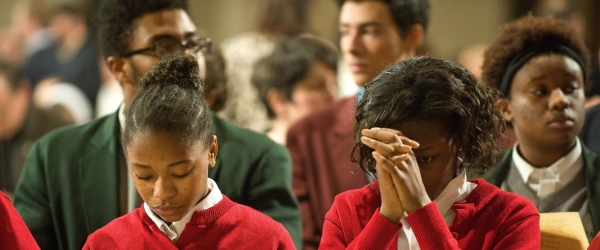Written by Father Tom Simonds, S.J., NCEA Director of Secondary Engagement [email protected]
Teaching the Catholic faith is everyone’s job in a Catholic school. Father Tom Simonds, S.J., will be writing a series of blog posts over the coming weeks to provide examples of how to do that.
How can faculty develop lesson plans across the curriculum and across programs using the Four Pillars of the Catechism? In this post, I will focus on Math.
Teaching the Catholic faith across the curriculum and in the co-curricular programs of Catholic schools is fundamental to the purpose of Catholic education. The way this teaching is done must take into consideration the context of today’s Catholic schools and today’s students.
According to the NCEA Annual Statistical Report on Schools, Enrollment and Staffing for 2022-2023, twenty-two percent of students enrolled in Catholic schools were non-Catholics. We also know that fewer families are practicing their Catholic faith. So, it is evident that some students will arrive at Catholic schools without much in the way of a faith formation.
Therefore, now more than ever, faculty and staff in Catholic schools must engage students in the faith formation process. The Four Pillars of the Catechism of the Catholic Church can serve as both curriculum and lesson plan organizers.
The Four Pillars of the Catechism of the Catholic Church:
- The Creed—What we believe.
- The Sacraments—How we celebrate together.
- The Commandments—How we live in the world.
- The Our Father—How we pray.
How can faculty develop lesson plans across the curriculum and across programs using the Four Pillars of the Catechism?
Teaching the Faith in Math Class
Students learn in multiple ways, and one way they learn is by observing adult role models. Teaching the Catholic faith in math class can begin by sharing the lives of mathematicians who were also practicing Catholics. Putting up their pictures in the classroom and mentioning their accomplishments during class are both effective ways to share these role models with your students. In this post, I am sharing a bit of information about some mathematicians who were also practicing Catholics to get you started.
Famous Catholic Mathematicians
Father Giovanni Girolamo Saccheri, S.J. (1667-1733): Giovanni was a member of the Society of Jesus in Italy, a Catholic priest, and a mathematician. He helped to develop non-Euclidean geometry.
Euphemia Haynes (1890-1980): Euphemia was an African American and a practicing Catholic. She was the first African-American woman to earn a Ph.D. in math. She taught at all grade levels, including college, and was influential in developing effective education for African-American children and youth.
Building on what you share with students through sharing role models with them, you can also use the Four Pillars of the Catechism of the Catholic Church to share the Catholic faith with students in math class. I provide an example here for each pillar.
What we believe: We can come to know God through the created world and through the use of human reason. Math can ultimately lead us to become aware of the infinite and the universal.
How we celebrate: Assist your students with preparing for school Masses and prayer services. Attend these celebrations as a model to your students of the importance of these events and as an example of integrating prayer into daily life.
How we live: Commandments 8-10 focus on respecting other people and other people’s property. Respect of others and their property is one important classroom rule to have posted.
How we pray: Begin each class with a prayer or ask students to volunteer to begin class with a prayer. The Our Father is one good choice, and there are many other written prayers you or your students can use. Prayers from the heart can also be effective.
Watch for future blog posts by Fr. Tom teaching the faith in 6-12 disciplines and programs, including science, language arts, social studies, religious education, physical education and athletics, clubs and activities, fine and performing arts and modern languages.
NSBECS Benchmarks: 7.9, 9.3
